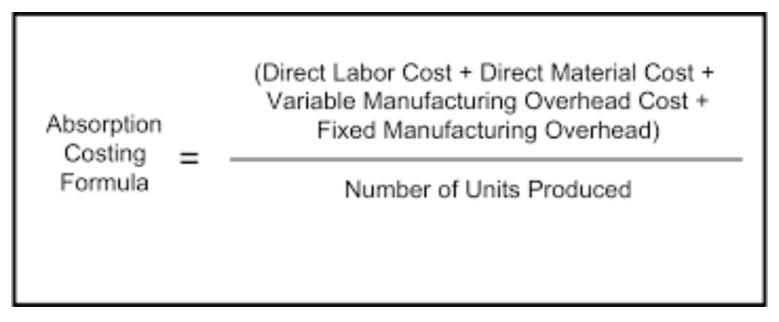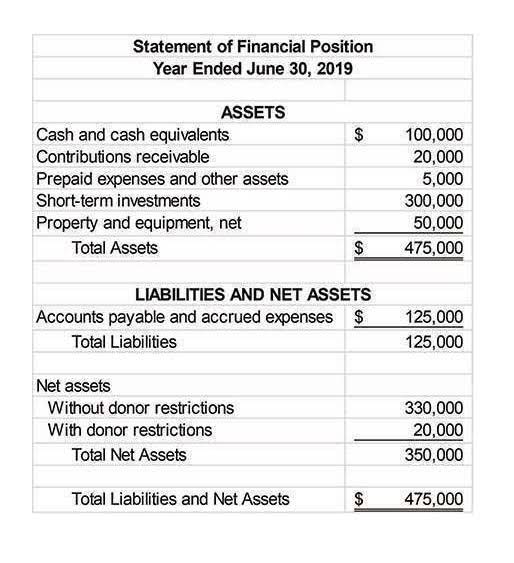A nonprofit’s statement of financial position can tell you how well the organization is performing financially at a given moment in time. Generally, a healthy nonprofit will have assets that are greater than their liabilities, and their net assets will have a large surplus that can be used to achieve its future goals. Many nonprofits include these statements in their annual reports to demonstrate accountability. The statement of activities is the non profit organization equivalent to the income statement, and shows the financial performance over an accounting period.
Statement of activities (income statement)
Most nonprofits generate these statements annually, though interim reports (monthly or quarterly) can be helpful for ongoing financial management. While each financial statement provides unique insights, they complement one another to give nonprofits a full picture of their financial situation. This statement enhances transparency and ensures compliance, especially for nonprofits required to file Form 990 or undergo audits.
- Temporarily restricted donations must be spent on a certain project over a particular period of time.
- Understanding unrestricted net assets is crucial for nonprofits as it helps determine the availability of funds for various purposes.
- Working with an accounting partner experienced in nonprofit compliance can provide valuable protection.
- It demonstrates how resources are used to advance your mission while maintaining operational efficiency.
- It is important to note that each nonprofit is unique, and the interpretation of financial performance should take into account the specific circumstances and objectives of the organization.
- In this article, we have explored the sample financial statements for nonprofit organizations.
Interpreting the Nonprofit Statement of Activities
By contrast, for-profit organizations can often categorize expenses in broad buckets like Sales, General and Administrative (SG&A), and Cost of Goods Sold (COGS) across several product lines. Although there are similarities in profit-and-loss elements, nonprofits must follow different rules and reporting structures. One of the key documents to help you make that call is the statement of activities. While platforms like QuickBooks can be configured for nonprofit use, solutions specifically designed for the sector may offer additional advantages for complex organizations.
- When you subtract the company’s liabilities from its assets, you are left with owner’s equity.
- Additionally, donors and funders often request financial statements to evaluate the financial health and sustainability of an organization before making contributions.
- Generally, a healthy nonprofit will have assets that are greater than their liabilities, and their net assets will have a large surplus that can be used to achieve its future goals.
- Organizations will separate these expenses by programs, fundraising, and management.
- Between fundraising, marketing, and keeping your programs afloat, your nonprofit team likely collects a variety of financial data.
Nonprofit Budget
By navigating these challenges with care and precision, nonprofits can ensure their financial statements accurately reflect their financial activities. While https://nerdbot.com/2025/06/10/the-key-benefits-of-accounting-services-for-nonprofit-organizations/ a business uses an income statement, known as a profit and loss statement, to rate its financial performance, a nonprofit’s statement of activities is different. These include assets without donor restrictions and those with restrictions based on the donor’s wishes. This way, the statement of activities gives a broader view of how money is used to further the nonprofit’s mission rather than just looking at profit.
- Get our FREE GUIDE to nonprofit financial reports, featuring illustrations, annotations, and insights to help you better understand your organization’s finances.
- Another option for excess profits is for nonprofits to set up reserve funds for future expenditures.
- These funds must be used for specific purposes in perpetuity and are often received through endowments or bequests.
- Once finalized, share your financial statements with key stakeholders, like your board of directors, donors, grant-making entities, and the general public, as needed.
- Long-term liabilities are car loans and mortgages, whereas current liabilities cover accounts payable debt like salaries and immediate payments.
- Here’s a look at five essential financial documents for nonprofits, what each statement is designed to show, plus an example of a nonprofit financial statement.
- The balance sheet is a snapshot of the assets and liabilities of a nonprofit organization at a specific point in time.
As opposed to an Income Statement which shows a profit or loss, the Statement of Activities instead shows a positive or negative change in each net asset fund. Thus, there is a drop in the ending balance of the temporarily restricted net assets. Individuals used to reading for-profit financial statements typically consider this a “loss”; however, nonprofits are not in the business of making a profit (or a loss), thus this is an incorrect assumption. Instead, the financial statement is showing that the organization expended some of the net assets that were obtained in a prior financial period(s). This is not a loss but utilizing funds for their intended purpose (thus meeting the donor-imposed restrictions).
Select an Appropriate Accounting Method for Nonprofit Financial Statements
Ideally, nonprofits should prepare internal financial statements monthly or quarterly for management purposes. However, externally, annual financial statements are standard, often accompanying required annual filings. These provide additional details and context for the data in the financial statements. Notes can clarify accounting methods, commitments, contingent liabilities, or any significant events that might impact financials. Simply, it reports your organization’s revenue and expenses during a specific period and the difference between them.















